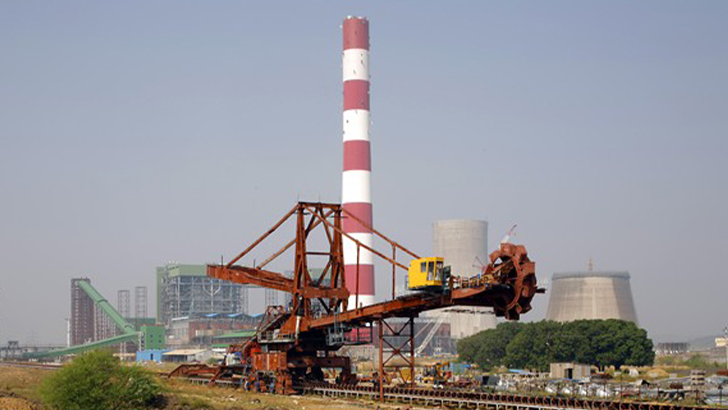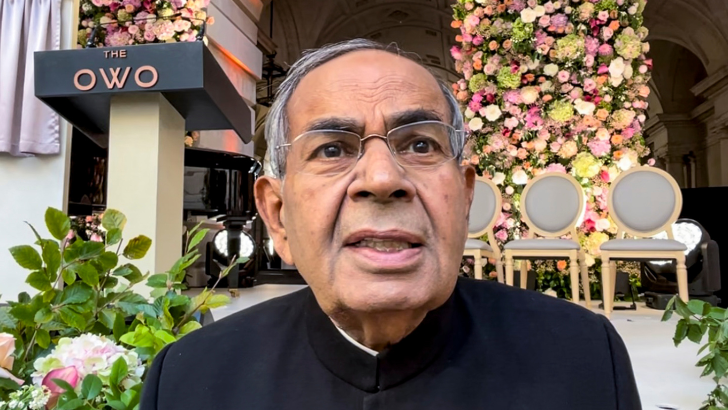PM's GST Diwali bonanza timely, strategic move: Experts
The Finance Ministry said it has proposed that most goods and services be taxed in two slabs - standard and merit - and a select few items be charged special rates.
PTI
-
Prime Minister Narendra Modi
The announcement by Prime Minister Narendra Modi regarding GST 2.0 is a
timely and strategic move to build a resilient Indian economy, according to
experts.
From the ramparts of the historic Red Fort, Modi announced that the GSTrates will be lowered by Diwali, bringing down prices of everyday use items, as
his government looks to reform the eight-year-old tax regime that has been
plagued by litigation and evasions.
Later, the Finance Ministry said it has proposed that most goods and
services be taxed in two slabs - standard and merit - and a select few items be
charged special rates.
This is to replace the current goods and services tax (GST) structure,
where the sale of goods and rendering of services are taxed in four different
brackets - 5, 12, 18 and 28 per cent, with luxury and sin goods attracting a
levy on top of the highest rate of 28 per cent.
"The Prime Minister's vision for GST 2.0 is a timely and strategic
move to build a resilient Indian economy. These are not merely procedural
changes; they are essential structural reforms designed to mitigate the risks
arising from global trade tensions. By addressing the inverted duty structure,
we are unlocking crucial working capital and making our exports more
competitive on the global stage," said Saurabh Agarwal, Tax Partner, EY
India.
Simultaneously, rationalising rates will boost domestic consumption,
creating a powerful buffer against external shocks, Agarwal added.
Krishan Arora, Partner-Tax Planning & Optimisation, Grant Thornton
Bharat, said GST rate structure rationalisation has been on the cards for a
while now.
"With the announcement by the Prime Minister, it seems the rate
fitment work is complete and one could expect the rate rejig of items of daily
consumption falling in 12 per cent to 5 per cent, which could help not only
reduce end-product prices but also boost consumption and demand, especially for
MSMEs," Arora said.
The eight-year-old tax regime, which merged central taxes like excise
duty and state levies like VAT into one tax, has led to the indirect tax base
doubling to 1.52 crore, but tax rate cuts and the pandemic slowdown have meant
net revenue collected has only recently converged to the pre-GST level.
Vivek Jalan, Partner, Tax Connect Advisory Services LLP, said the GST
Council has not met for the last eight months as a massive exercise for rate
rationalisation is underway, and a Group of Ministers (GoM) are reviewing the
comprehensive rate rationalisation programme.
"It is expected that this Diwali, items of mass consumption by the
common man will be brought into the lower slab of 5 per cent GST. For example,
small sachets of Rs 10 or less supplied by FMCG players may be considered to be
brought under the lower tax bracket of 5 per cent," he added.
Jalan said a lower GST rate will augur well for the overall economy.
CII Director General Chandrajit Banerjee said the Prime Minister's
Independence Day address reflects a deep commitment to empowering India's
youth, strengthening MSMEs, and accelerating the Atmanirbhar Bharat mission.
The milestone of the Rs 1 lakh crore youth empowerment initiative of the
PM-Viksit Bharat Rozgar Yojana, with its Rs 15,000 support for first-time job
seekers, has the potential to create large-scale employment opportunities,
enhance skills, and open pathways for sustained livelihoods, he noted.
MSMEs, as the backbone of India's economy, stand to gain significantly
from these measures. Increased access to talent, targeted incentives, and a
stronger domestic manufacturing ecosystem will enable them to scale, innovate,
and integrate more deeply into global value chains, Banerjee said.
"The long-awaited GST 2.0 now seems even closer. The Prime
Minister, in his speech on the 79th Independence Day, has promised a bonanza
for aam aadmi in Diwali. There is a possibility of two GST Council meetings in
September in this regard. The possible reforms could include doing away with
the 12 per cent slab, rate rationalisation for health and life insurance, some
of the essential items, and clarity in the provisions regarding blocked
credits," Harsh Shah, Partner, Economic Laws Practice, said.
With the GST collections in FY 2025-26 likely to exceed 22 lakh crore
(average monthly collection of 1.85 lakh crore), the time is right to provide
the much-needed boost to the economy, especially considering the geopolitical
situation over the last few months, he pointed out.
Vineet Mittal, Chairman of Avaada Group, said the announcement on the
GST will ease the tax burden and unleash entrepreneurship across the nation.
The Samudra Manthan vision for deepwater energy and critical mineral
exploration shows a decisive push toward energy self-reliance and securing
resources vital for electric mobility, renewables, defence, and advanced
technology, he said.
Industry body Assocham said that by easing the tax burden, creating jobs
and enhancing skills, the government is laying the foundation for a prosperous,
self-reliant India, capable of competing globally while ensuring inclusive
growth for every citizen.
Leave a Reply
Your email address will not be published. Required fields are marked *








.png)

.png)
.png)

.png)




.png)
.png)
